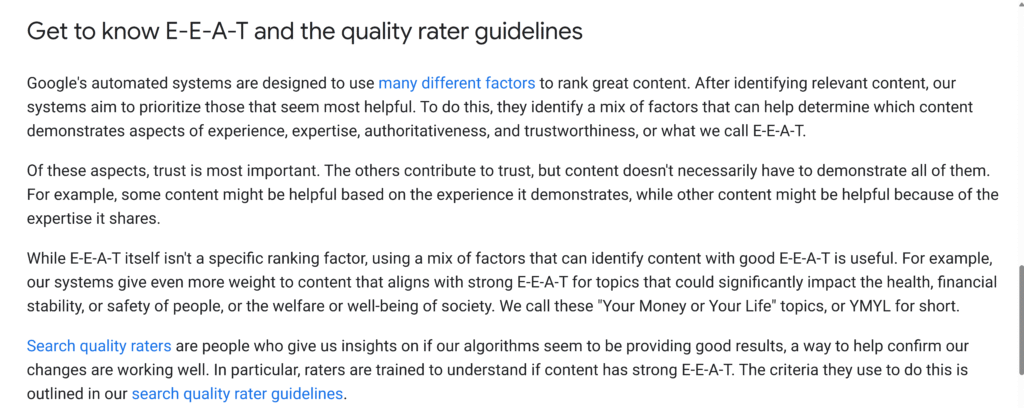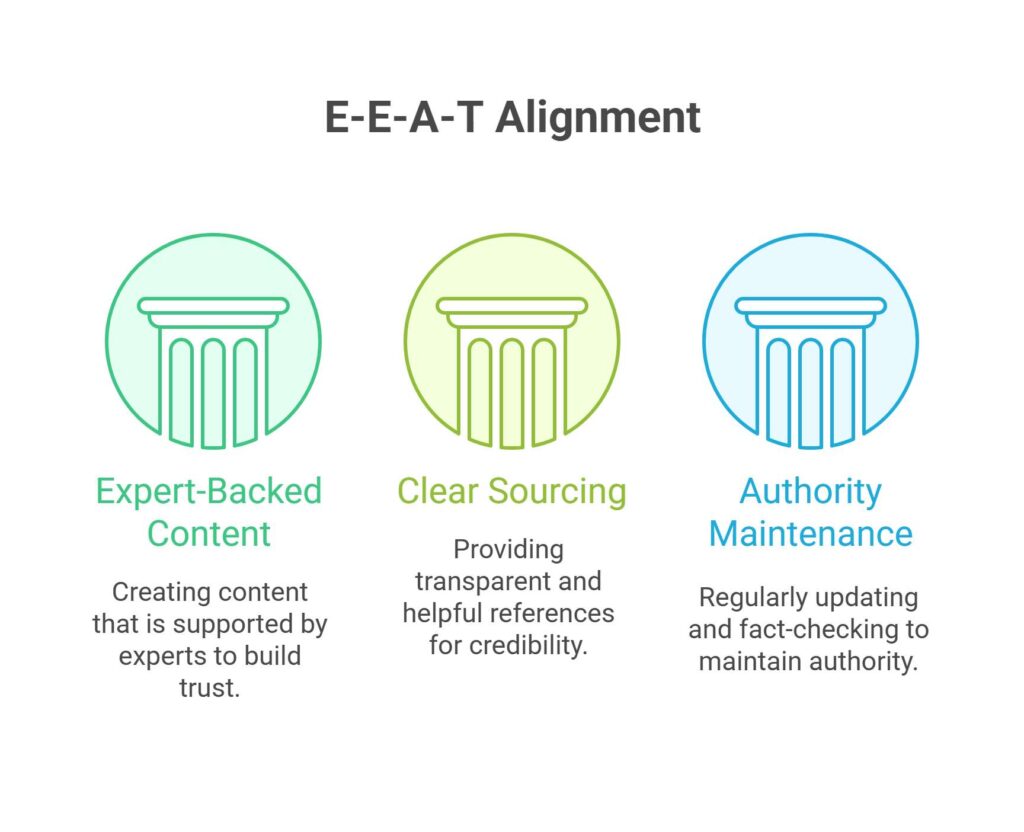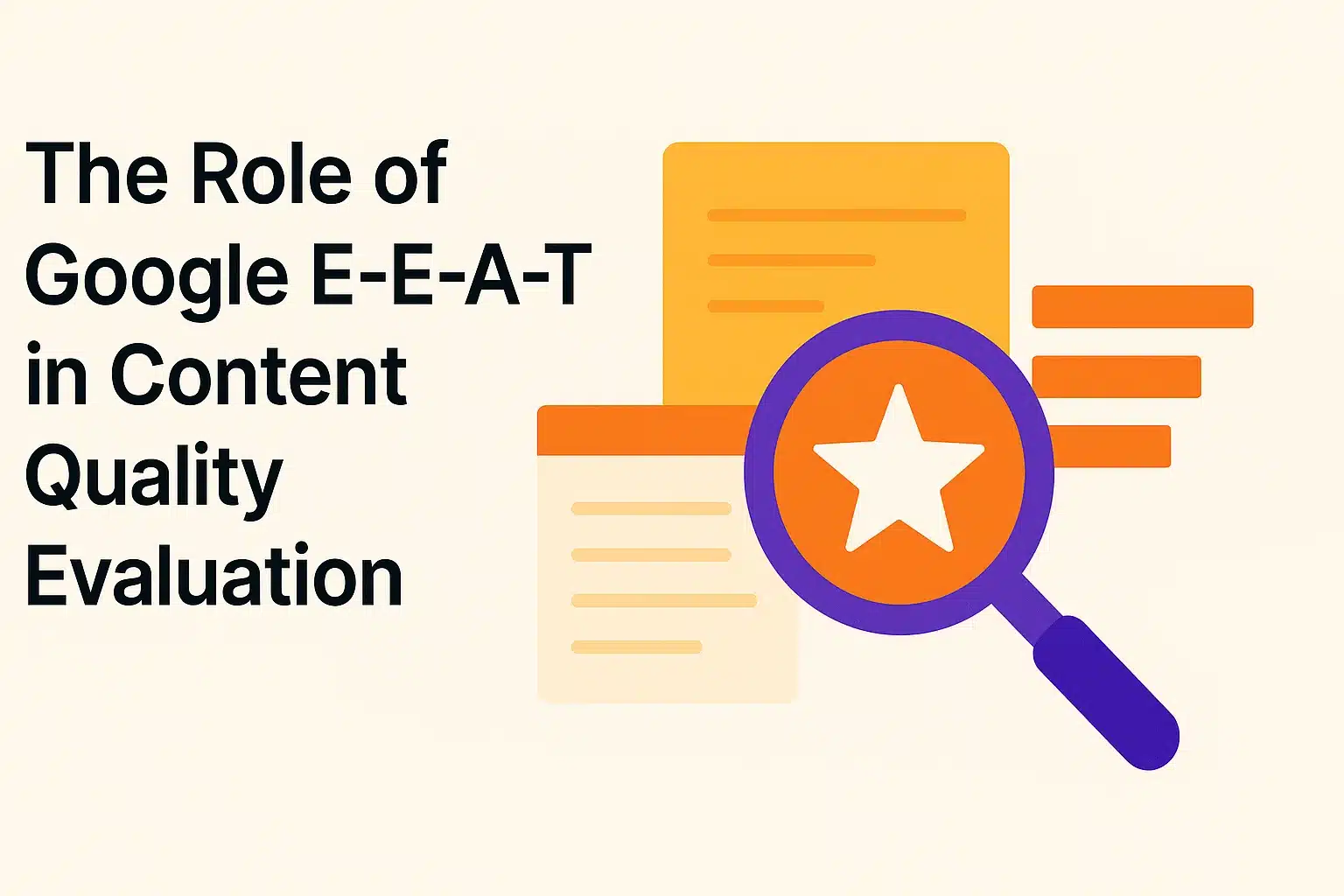Website owners want to appear in top search results. Google search quality guidelines direct them to create content that addresses user needs. These standards, paired with Google E-E-A-T guidelines, aim to shape pages that search engines see as worthwhile. The sections below describe how this process works.
Readers often ask why these guidelines exist. In simple terms, Google sees a broad range of pages daily. By applying search quality evaluator guidelines, Google checks if pages meet a certain standard. This helps guarantee relevant results, leading to better browsing experiences across the web.
What Are Google Search Quality Guidelines?
Google search quality guidelines are a set of best practices that Google uses to measure the usefulness of pages. They explain how evaluators judge page content, user satisfaction, and trust elements. Although they do not directly change rankings, they shape how Google refines its approach. By following these standards, creators produce high quality content for SEO that matches user intent. These rules also stress user trust and clarity, which helps many users see valid and solid answers.
How Google defines high quality content for SEO
Google sets standards to define high quality content for SEO. The focus is on thorough coverage, clarity, and well-structured paragraphs. Pages must stay relevant, have up-to-date facts, and meet user needs without filler text. Authors should show knowledge or experience, especially for sensitive topics. A clear layout, contact details, and honest disclaimers build trust. The best pages provide direct answers that match queries. This approach keeps visitors engaged as they find valuable content that respects searcher intent.
“Raters assess how well content fulfills a search request, and evaluate the quality of results based on the expertise, authoritativeness, and trustworthiness of the content. These ratings do not directly impact ranking, but they do help us to benchmark the quality of our results and make sure these meet a high bar all around the world.”
Why search quality evaluator guidelines matter
Search quality evaluator guidelines help Google confirm it presents the most useful pages. These instructions guide hired raters who check whether results appear helpful and trusted. Their feedback informs Google’s algorithms, though it does not directly decide rankings. This process supports better user trust and helps remove clearly low-grade pages. According to Metric Marketing, the entire document—called the Search Quality Raters Guidelines (QRGs)—is 172 pages (Metric Marketing). This broad scope reflects Google’s effort to highlight trusted sources.
What is included in Google E-E-A-T guidelines?

Google E-E-A-T guidelines cover experience, expertise, authoritativeness, and trust. First introduced in 2018, the original E-A-T acronym stood for Expertise, Authoritativeness, and Trustworthiness, then Google added another E in 2022 for Experience. These guidelines highlight pages with a strong helpful purpose, clear website details, and accurate content. They also note the value of real-world knowledge for certain hobby-based topics. The framework encourages creators to prioritize real credentials or genuine usage while avoiding all misleading claims.
Why E-E-A-T Shapes Content Evaluation Standards
E-E-A-T determines how superficial or deep a page appears to Google. This concept affects content review standards because Google wants trustworthy pages. If a page lacks clear authority or direct experience, its overall rating decreases. With E-E-A-T, Google highlights user-focused elements like original insight, strong expertise, and factual correctness. By adopting these pillars, site owners show they care about real value. This approach directs search results away from shallow content. The result is a far better user experience.
Explaining Experience, Expertise, Authority, and Trust
First introduced in 2014 as E-A-T, this idea added another “E” for Experience in December 2022 (Foundation Inc.). Experience covers real knowledge earned through firsthand involvement, while Expertise covers formal or well-grounded skill. Authority stands for credibility gained through recognition by trusted sources, and Trust is the core that confirms all other factors. Google checks these traits using daily human input from search quality raters. This layered view helps gauge how pages meet user needs in real-world contexts.
How E-E-A-T affects content rankings
E-E-A-T is not a direct ranking factor, but high E-E-A-T content is more likely to rank well in search results (Moz). Google sees trust as the key. Not reliable pages drop, no matter how skilled they seem. Sites that show genuine skill, link to trusted sources, and maintain open contact details often see stronger visibility. Google also refines updates—like the August 2023 Core Update—to reward pages with proven trust. This emphasis on E-E-A-T shapes how searchers discover expert-driven results.
Examples of E-E-A-T signals on webpages
One example is a restaurant review written by a diner who visited that place, rather than someone with secondhand info (Search Engine Journal). Google highlights direct experience as a key factor. Low E-E-A-T pages might have hollow or copied text. Additionally, strong signals include factual coverage, author bios, and open contact info, and clear disclaimers. Trust is the most critical part; a page with no trust ranks poorly, despite any expertise shown. Google wants real feedback over shallow remarks.
How to Align Your Content With E-E-A-T Principles
Content creators who want to align with E-E-A-T should emphasize direct expertise, sincere authority, and trust. This framework requires real examples, verified data, and user-centered page structures. Google’s search quality evaluator guidelines highlight the value of experience in building trust. Writers may cite recognized sources, include real disclaimers, and display personal insight. By addressing user intent and keeping new facts updated, pages demonstrate reliability. E-E-A-T guides site owners to present helpful text, rather than basic or unproven claims.

1. Create expert-backed content users can trust
E-E-A-T came from Google’s Quality Rater Guidelines in 2014 (Backlinko). Expert-backed content involves real skill or actual usage. Some write about topics like baking or focused tech, relying on personal or professional insight. Google sees genuine expertise as proof that a page offers more than surface remarks. This approach increases user trust and tells search engines that the writing is valuable. By sharing direct knowledge, creators meet user intent and differentiate themselves among generic pieces and grows user trust.
2. Use clear sourcing and provide helpful references
Google urges writers to reveal sources so users can trust each statement, especially on focused topics. Quoting official data or linking to trusted facts helps readers check accuracy. Raters assess how well content meets a query and gauge expertise (Backlinko). Clear references prevent confusion and show readiness to share proof. Content with missing citations might seem incomplete or doubtful. Even short references, like recognized studies or official news pages, add confidence and increase a site’s trust signs and trust.
3. Update and fact-check to maintain authority over time
Google stresses that trust is the foundation of E-E-A-T (Backlinko). Web pages need regular updates to reflect fresh facts and remove stale details. This habit keeps trust maintained and assures readers that the content is valid now. Fact-checking also removes errors that might damage a site’s name. In fast-changing fields like health or finances, updated pages display active expertise. By reviewing old material and adjusting data, creators retain authority. These steps convince searchers that accuracy matters above all.
Conclusion
E-E-A-T highlights Google’s focus on real knowledge, real skills, and reliable content. Site owners who adopt these standards have a better shot at appearing in top positions. They present honest articles, reference credible sources, and offer unique insights. This approach creates user loyalty and trust. By aligning with Google search quality guidelines, creators reduce confusion and present content that rises above the noise. The best pages do more than rank: they educate with clarity. Google’s updates reflect an ongoing drive to remove low-value results. E-E-A-T continues to be a path to notice, pushing everyone to maintain a higher bar for online pages.
FAQs
People often ask how Google’s guidelines shape content. The following answers address common questions about search quality evaluator guidelines and E-E-A-T. By knowing these points, site owners can adapt their methods to produce helpful pages that better meet user needs.
What are Google search quality guidelines used for?
How do the Google E-E-A-T guidelines affect SEO content?
What makes high quality content for SEO according to Google?
How do quality raters use the search quality evaluator guidelines?
What should publishers focus on to meet E-E-A-T standards?
How often does Google update its search quality guidelines?

Ridam Khare is an SEO strategist with 7+ years of experience specializing in AI-driven content creation. He helps businesses scale high-quality blogs that rank, engage, and convert.



